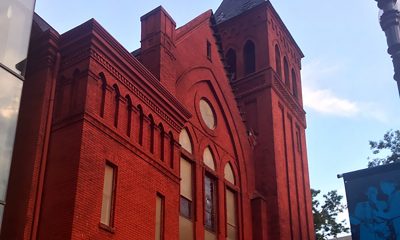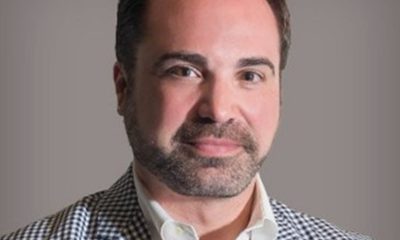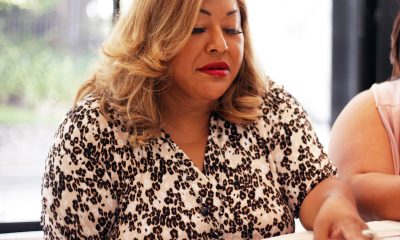Local
Wone’s widow takes the stand
Trial begins with wife’s testimony, chilling 911 tape
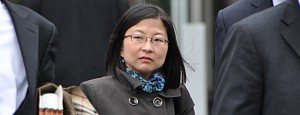
Katherine Wone, wife of slain attorney Robert Wone, testified this week about her husband’s relationship with the three gay men charged in connection with his murder. (Washington Blade photo by Michael Key)
The wife of slain attorney Robert Wone testified this week about her husband’s friendship with three gay men charged with obstructing a police investigation into his murder.
Katherine Wone, who became the government’s first witness Monday in a complex and long-awaited trial, said the couple gave money to a Virginia gay group that Joseph Price, one of the defendants, once chaired.
Price, 39, his domestic partner, Victor Zaborsky, 44, and the couple’s housemate, Dylan Ward, 39, are charged with obstruction of justice, conspiracy to obstruct justice and evidence tampering in connection with Wone’s August 2006 stabbing death in their Dupont Circle area townhouse. No one has been charged with the murder.
If convicted on all three counts, the defendants face a possible maximum sentence of 38 years in prison.
In testimony divided across two days, Katherine Wone said her husband, who became friends with Price during their days as students together at Virginia’s College of William & Mary, arranged to spend the night at the men’s house on Aug. 2, 2006.
She said he planned to work late at his job in D.C. as general counsel for Radio Free Asia and decided not to drive home that night to the couple’s house in Oakton, Va.
“Do you remember Robert saying he and Joe were good friends?” defense attorney Bernard Grimm asked Katherine Wone during cross-examination.
“Yes,” she said.
“Did you ever see a crossed word between Joe and Robert?” Grimm asked.
“No,” she replied.
In response to questions from Grimm, Katherine Wone said her husband was aware that Price was involved with Equality Virginia, a statewide gay civil rights group, and that he supported the cause of equal rights for “all people.”
She told of how she and Robert Wone accepted an invitation from Price to attend an Equality Virginia fundraising dinner in Richmond one year before the murder. And she confirmed that a photo of the Wones and Price that Grimm showed her on the witness stand was taken at the dinner.
The three defendants have said through their lawyers that an intruder killed Robert Wone after entering their house from a rear door while the men slept in their bedrooms. Each of their attorneys stressed during opening arguments that their clients’ friendship with Wone demonstrated they had no motive to harm him and that the government had failed to find a motive for the murder.
But Assistant U.S. Attorney Glenn Kirschner, the lead prosecutor, noted in his opening argument that the men tampered with the crime scene and repeatedly misled police and homicide detectives investigating the murder. He said the defendants know — but refuse to disclose — the identity of the person or people who fatally stabbed Wone in the chest.
Among other things, Kirschner noted that paramedics and crime scene investigators found almost no blood on Wone’s body or the bed where he was found with three large stab wounds. There were no signs of a struggle, no defensive wounds on his arms, no signs of forced entry into the house, and nothing was disturbed or taken from the house, Kirschner said.
All of this, he said, was evidence of crime scene tampering and completely dispelled the defendants’ claim that an intruder killed Wone.
Defense attorneys representing the three gay men countered that the evidence doesn’t support any of the government’s allegations, including an assertion that more blood should have been found on the scene.
They planned to call an expert witness, a cardiac surgeon, who is expected to testify that the single stab wound piercing Wone’s heart would have killed him within five seconds, shutting down the heart’s ability to pump blood. A stopped heart, rather than a sinister plot postulated by the government, was the reason little or no blood was seen, defense attorneys said.
From the moment homicide detectives arrived at the house to investigate the murder, they became “marred and infatuated in a theory based on ignorance,” prompting them to suspect the men were involved in the murder, said Grimm, who is Price’s attorney.
“Why is a straight man coming to the house of a gay man,” Grimm quoted a detective as saying while interviewing the defendants.
Grimm and David Schertler, Ward’s attorney, said in their opening arguments that the three defendants’ sexual orientation and their three-way relationship played a role in shaping police and prosecutor assumptions that they, rather than an intruder, were involved in the murder.
Kirschner challenged that assertion, however, saying investigators have linked the men to a conspiracy to obstruct the investigation based on a vast array of crime scene findings.
“This case is not about sexual orientation,” he told D.C. Superior Court Judge Lynn Leibovitz, who is poised to decide the men’s fate after the defendants opted to forego a jury trial.
“This case is not about the personal relationship of these three. There is nothing negative that can be inferred due to the sexual orientation or lifestyle choices of these men,” he said.
But he noted that Price, Zaborsky and Ward “had powerful bonds among them,” which amounted to a “tight knit family” that is protecting its members from the harm that would come to them “if the truth came out.”
911 tape stirs courtroom
Katherine Wone’s calm testimony was offset Tuesday afternoon when prosecutors played a dramatic audio tape of Zaborsky’s 911 call reporting that Wone had been stabbed in his house.
On the recording, which lasts about 12 minutes, a near hysterical Zaborsky is heard making a desperate plea for help. He tells the 911 operator that a male friend visiting the house “is not conscious” after being stabbed.
When the operator asked him who stabbed the person, Zaborsky replied, “I don’t know who stabbed him. We don’t know how they got in. The person has one of our knives. … I’m afraid to go downstairs.”
The operator then urged Zaborsky to use a towel to stop the bleeding by pressing it firmly on the stab wound. He replied that his housemate, meaning Price, was already doing that in the guest bedroom where the stabbing victim was staying.
In a development that prosecutors have called highly significant, Zaborsky is heard on the tape asking the operator, “What time is it?” The operator, sounding surprised, repeated the question before responding, “11:54.”
One day earlier, in his opening argument, prosecutor Kirschner said that Zaborsky’s question about the time was among the indicators that he participated in a conspiracy to conceal from investigators what really happened during Wone’s brief stay at the men’s house.
Investigators believe Wone arrived at the house shortly after 10:30 p.m. Kirschner followed up on the chronology of the incident when he next called as witnesses William and Claudia Thomas, a married couple who live in the townhouse adjoining the defendants’ house at 1509 Swann St., N.W.
William Thomas testified that he heard a scream coming from the defendants’ house through a wall shared by the two houses on the night of the murder. He said he did not check the time when he heard the scream, but said he remembered hearing his wife watching the 11 p.m. news on Channel 7. His wife backed up that account during her own testimony.
Based on that account, police and prosecutors have said between 12 and 49 minutes elapsed from the time of the scream and the time Zaborsky called 911 at 11:49 p.m.
Investigators have said the scream could have marked the time Wone was stabbed. A delay of even 12 minutes in making the 911 call could have been used to clean the crime scene and hide or discard other evidence linked to the murder.
The Thomas’ testimony was followed by testimony from Jeff Baker, one of the first of the paramedics to arrive at the house in response to the 911 call.
Baker said the first of several highly unusual murder scene observations he made came during his encounter with Ward, who was standing at the top of the second floor staircase when Baker approach the room where Wone’s body was found. He noted that when he asked Ward what happened, Ward ignored him and retreated into his bedroom.
Upon entering the room where Wone was lying lifeless on a pull-out sofa bed, Baker said, he was startled at what he saw. Wone was lying “flat on his back” with three stab wounds to his chest with almost no blood on his body or on the bed, he said.
This was highly unusual for a stabbing, Baker said, based on his experience in responding to hundreds of stabbings during his 14 years as a paramedic.
He said Price was sitting on the bed next to Wone’s lifeless body. There was no towel on Wone’s wounds and Price’s hands had no signs of blood, which would be expected if he had been holding the towel on Wone’s chest.
Baker said he later observed a light streak of blood on Wone’s abdomen that appeared as if it had been “wiped.”
Kirschner said in his opening argument that investigators found the towel in the room, but it had only a small amount of blood on it. He noted that Price told police he found one of the knives from the men’s kitchen in the room where Wone was stabbed.
Authorities later reported that cotton fibers found on the knife indicated that blood had been taken from Wone’s wounds and wiped onto the knife with a towel to make it look like the murder weapon. Although fibers found on the knife matched that of a towel, no fibers were found that matched the shirt Wone wore and which had been pierced by the knife used to kill him, Kirschner said in his opening argument.
Police evidence experts and findings from an autopsy on Wone also showed the blood on the knife covered the entire blade, even though the depth of the wounds on Wone’s chest indicated that blood would not have covered the full length of the blade, Kirschner said.
Kirschner has said this was further evidence that the men tampered with the crime scene to mislead police. He noted that a cutlery set found in Ward’s bedroom had one knife missing. When investigators obtained a duplicate knife from the manufacturer, they found it matched the size and depth of Wone’s wounds better than the bloody knife found at the scene, further suggesting that someone other than an intruder and someone known to the defendants was responsible for the murder.
Defense attorneys disputed these assertions in their opening arguments, saying their own expert witnesses would testify that the cotton fibers on the knife could not be accurately linked to either the towel or Wone’s shirt. Instead, they said the fibers are found in the ambient air and on all objects and were meaningless as evidence in a stabbing.
What really happened, Schertler said in his opening argument, is that the defendants are telling the truth in saying they were not involved in the murder and that an intruder killed Robert Wone.
D.C. attorney Dale Edwin Sanders, who practices criminal law and is not associated with the case, said the part of the government’s case that appears the strongest is its assertion that no evidence exists to show an intruder entered the house to kill Wone. He noted that in cases based on circumstantial evidence, sometimes “missing” evidence becomes the key to the case.
“It’s largely a circumstantial case,” he said. “There’s no smoking gun, but the government has presented a neatly interwoven mosaic of 100 pieces of evidence that all fit together.”
Other observers at the trial said the defense was ready to discredit or downplay the government’s evidence with the aim of establishing enough doubt that Leibovitz would have to find the men not guilty.
Attorneys on both sides have predicted the trial would last about five weeks.
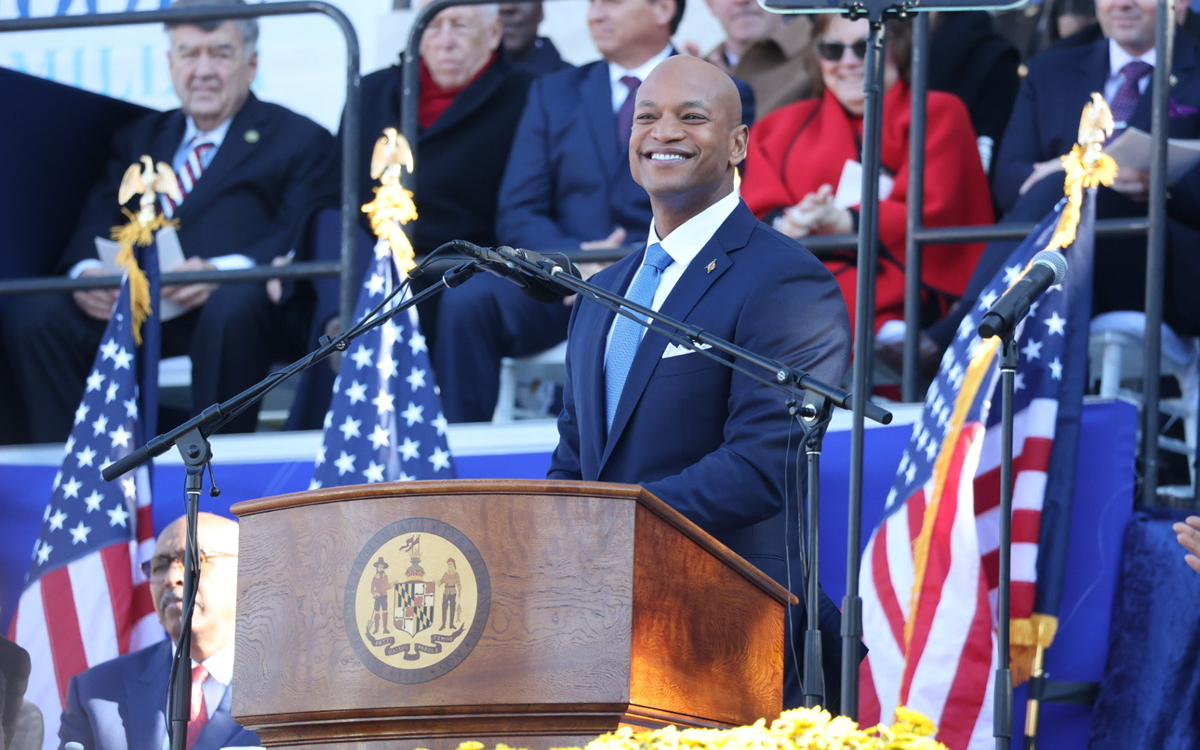
Maryland Gov. Wes Moore on Thursday signed a bill that seeks to combat efforts to ban books from state libraries.
House Bill 785, also known as the Freedom to Read Act, would establish a state policy “that local school systems operate their school library media programs consistent with certain standards; requiring each local school system to develop a policy and procedures to review objections to materials in a school library media program; prohibiting a county board of education from dismissing, demoting, suspending, disciplining, reassigning, transferring, or otherwise retaliating against certain school library media program personnel for performing their job duties consistent with certain standards.”
Moore on Thursday also signed House Bill 1386, which GLSEN notes will “develop guidelines for an anti-bias training program for school employees.”
District of Columbia
Catching up with the asexuals and aromantics of D.C.
Exploring identity and finding community
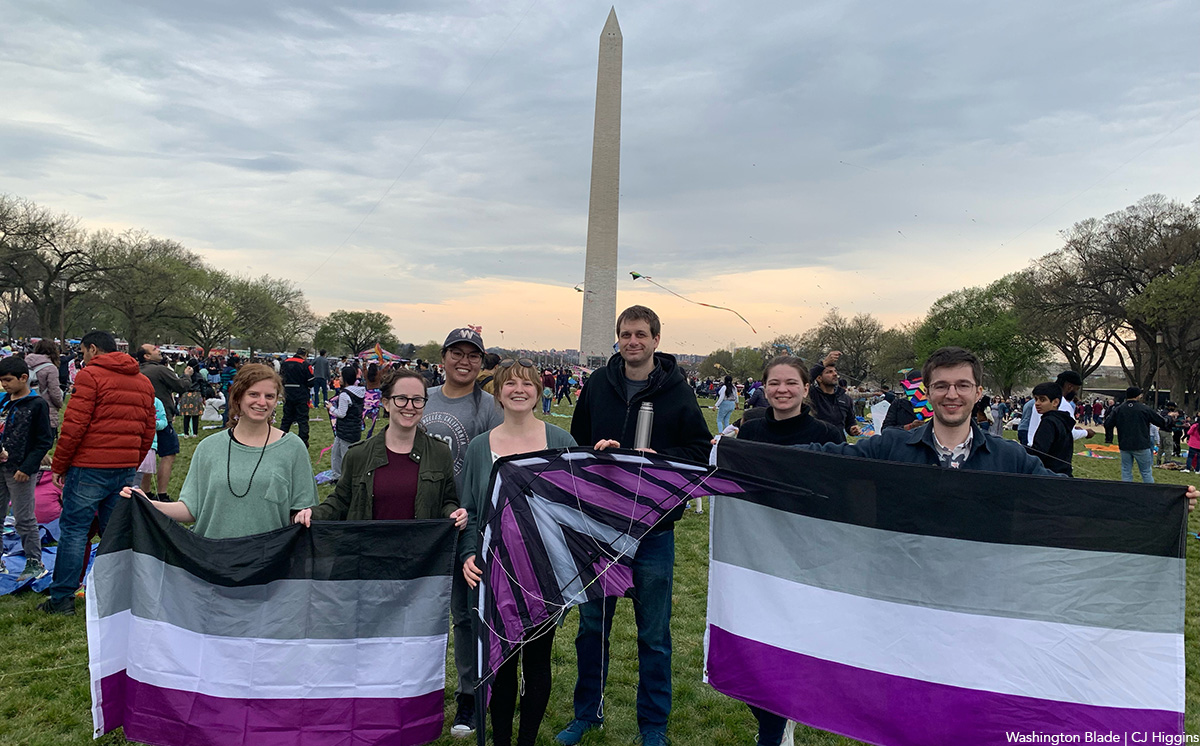
There was enough commotion in the sky at the Blossom Kite Festival that bees might have been pollinating the Washington Monument. I despaired of quickly finding the Asexuals and Aromantics of the Mid-Atlantic—I couldn’t make out a single asexual flag among the kites up above. I thought to myself that if it had been the Homosexuals of the Mid-Atlantic I would’ve had my gaydar to rely on. Was there even such a thing as ace-dar?
As it turned out, the asexual kite the group had meant to fly was a little too pesky to pilot. “Have you ever used a stunt kite?” Bonnie, the event organizer asked me. “I bought one. It looked really cool. But I can’t make it work.” She sighed. “I can’t get the thing six feet off the ground.” The group hardly seemed to care. There was caramel popcorn and cookies, board games and head massages, a game of charades with more than its fair share of Pokémon. The kites up above might as well have been a coincidental sideshow. Nearly two dozen folks filtered in and out of the picnic throughout the course of the day.
But I counted myself lucky that Bonnie picked me out of the crowd. If there’s such a thing as ace-dar, it eludes asexuals too. The online forum for all matters asexual, AVEN, or the Asexual Visibility and Education Network, is filled with laments: “I don’t think it’s possible.” “Dude, I wish I had an ace-dar.” “If it exists, I don’t have it.” “I think this is just like a broken clock is right twice a day type thing.” What seems to be a more common experience is meeting someone you just click with—only to find out later that they’re asexual. A few of the folks I met described how close childhood friends of theirs likewise came out in adulthood, a phenomenon that will be familiar to many queer people. But it is all the more astounding for asexuals to find each other this way, given that asexual people constitute 1.7% of sexual minorities in America, and so merely .1% of the population at large.
To help other asexuals identify you out in the world, some folks wear a black ring on their middle finger, much as an earring on the right ear used to signify homosexuality in a less welcoming era. The only problem? The swinger community—with its definite non-asexuality—has also adopted the signal. “It’s still a thing,” said Emily Karp. “So some people wear their ace rings just to the ace meet-ups.” Karp has been the primary coordinator for the Asexuals and Aromantics of the Mid-Atlantic (AAMA) since 2021, and a member of the meet-up for a decade. She clicked with the group immediately. After showing up for a Fourth of July potluck in the mid-afternoon, she ended up staying past midnight. “We played Cards against Humanity, which was a very, very fun thing to do. It’s funny in a way that’s different than if we were playing with people that weren’t ace. Some of the cards are implying, like, the person would be motivated by sex in a way that’s absurd, because we know they aren’t.”
Where so many social organizations withered during the pandemic, the AAMA flourished. Today, it boasts almost 2,000 members on meetup.com. Karp hypothesized that all the social isolation gave people copious time to reflect on themselves, and that the ease of meeting up online made it convenient as a way for people to explore their sexual identity and find community. Online events continue to make up about a third of the group’s meet-ups. The format allows people to participate who live farther out from D.C. And it allows people to participate at their preferred level of comfort: while many people participate much as they would at an in-person event, some prefer to watch anonymously, video feed off. Others prefer to participate in the chat box, though not in spoken conversation.
A recent online event was organized for a discussion of Rhaina Cohen’s book, “The Other Significant Others,” published in February. Cohen’s book discusses friendship as an alternative model for “significant others,” apart from the romantic model that is presupposed to be both the center and goal of people’s lives. The AAMA group received the book with enthusiasm. “It literally re-wired my brain,” as one person put it. People discussed the importance of friendship to their lives, and their difficulties in a world that de-prioritized friendship. “I can break up with a friend over text, and we don’t owe each other a conversation,” one said. But there was some disagreement when it came to the book’s discussion of romantic relationships. “It relegates ace relationships to the ‘friend’ or ‘platonic’ category, to the normie-reader,” one person wrote in the chat. “Our whole ace point is that we can have equivalent life relationships to allo people, simply without sex.” (“Allo” is shorthand for allosexual or alloromantic, people who do experience sexual or romantic attraction.)
The folks of the AAMA do not share a consensus on the importance of romantic relationships to their lives. Some asexuals identify as aromantic, some don’t. And some aromantics don’t identify as asexual, either. The “Aromantic” in the title of the group is a relatively recent addition. In 2017, the group underwent a number of big changes. The group was marching for the first time in D.C. Pride, participating in the LGBTQ Creating Change conference, and developing a separate advocacy and activism arm. Moreover, the group had become large enough that discussions were opened up into forming separate chapters for D.C., Central Virginia, and Baltimore. During those discussions, the group leadership realized that aromantic people who also identified as allosexual didn’t really have a space to call their own. “We were thinking it would be good to probably change the name of the Meetup group,” Emily said. “But we were not 100% sure. Because [there were] like 1,000 people in the group, and they’re all aces, and it’s like, ‘Do you really want to add a non-ace person?’” The group leadership decided to err on the side of inclusion. “You know, being less gatekeep-y was better. It gave them a place to go — because there was nowhere else to go.”
The DC LGBT Center now sponsors a support group for both asexuals and aromantics, but it was formed just a short while ago, in 2022. The founder of the group originally sought out the center’s bisexual support group, since they didn’t have any resources for ace folks. “The organizer said, you know what, why don’t we just start an ace/aro group? Like, why don’t we just do it?” He laughed. “I was impressed with the turnout, the first call. It’s almost like we tapped into, like, a dam. You poke a hole in the dam, and the water just rushes out.” The group has a great deal of overlap with the AAMA, but it is often a person’s first point of contact with the asexual and aromantic community in D.C., especially since the group focuses on exploring what it means to be asexual. Someone new shows up at almost every meeting. “And I’m so grateful that I did,” one member said. “I kind of showed up and just trauma dumped, and everyone was really supportive.”
Since the ace and aro community is so small, even within the broader queer community, ace and aro folks often go unrecognized. To the chagrin of many, the White House will write up fact sheets about the LGBTQI+ community, which is odd, given that when the “I” is added to the acronym, the “A” is usually added too. OKCupid has 22 genders and 12 orientations on its dating website, but “aromantic” is not one of them — presumably because aromantic people don’t want anything out of dating. And since asexuality and aromanticism are defined by the absence of things, it can seem to others like ace and aro people are ‘missing something.’ One member of the LGBT center support group had an interesting response. “The space is filled by… whatever else!” they said. “We’re not doing a relationship ‘without that thing.’ We’re doing a full scale relationship — as it makes sense to us.”
CJ Higgins is a postdoctoral fellow with the Alexander Grass Humanities Institute at Johns Hopkins University.
District of Columbia
Bowser budget proposal calls for $5.25 million for 2025 World Pride
AIDS office among agencies facing cuts due to revenue shortfall
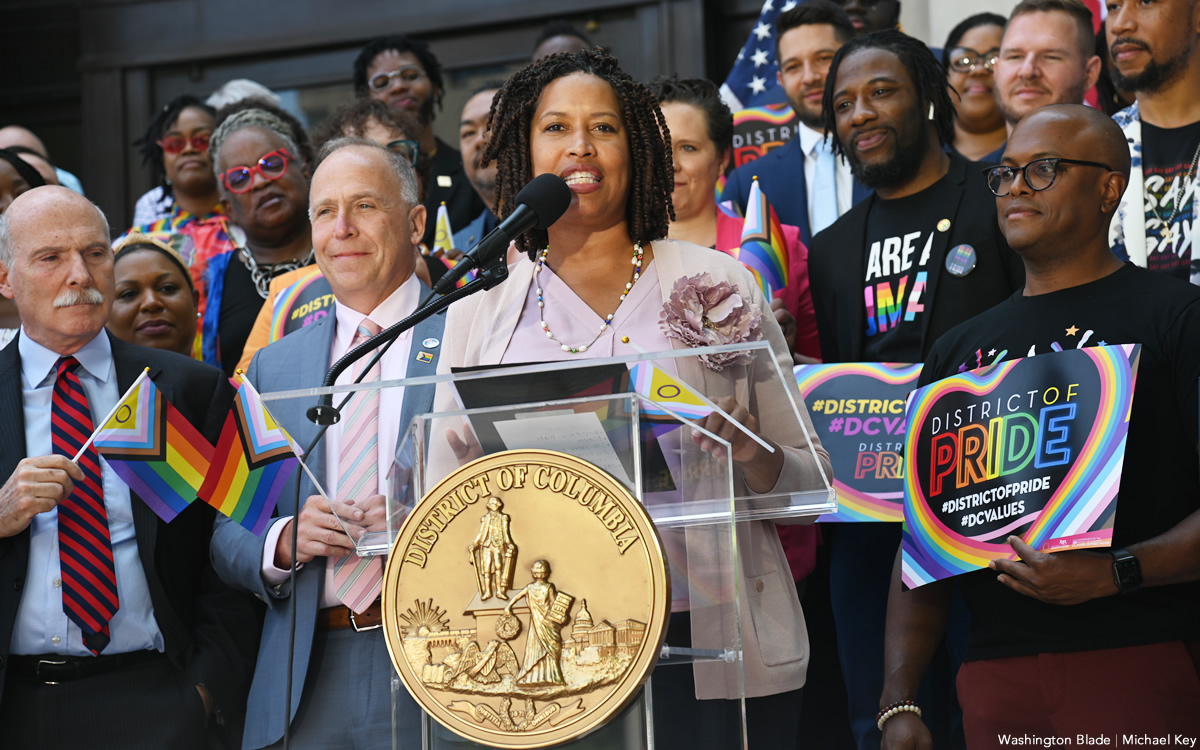
D.C. Mayor Muriel Bowser’s proposed fiscal year 2025 budget includes a request for $5.25 million in funding to support the June 2025 World Pride celebration, which D.C. will host, and which is expected to bring three million or more visitors to the city.
The mayor’s proposed budget, which she presented to the D.C. Council for approval earlier this month, also calls for a 7.6 percent increase in funding for the Mayor’s Office of LGBTQ Affairs, which amounts to an increase of $132,000 and would bring the office’s total funding to $1.7 million. The office, among other things, provides grants to local organizations that provide services to the LGBTQ community.
Among the other LGBTQ-related funding requests in the mayor’s proposed budget is a call to continue the annual funding of $600,000 to provide workforce development services for transgender and gender non-conforming city residents “experiencing homelessness and housing instability.” The budget proposal also calls for a separate allocation of $600,000 in new funding to support a new Advanced Technical Center at the Whitman-Walker Health’s Max Robinson Center in Ward 8.
Among the city agencies facing funding cuts under the mayor’s proposed budget is the HIV/AIDS, Hepatitis, Sexually Transmitted Disease, and Tuberculosis Administration, known as HAHSTA, which is an arm of the D.C. Department of Health. LGBTQ and AIDS activists have said HAHSTA plays an important role in the city’s HIV prevention and support services. Observers familiar with the agency have said it recently lost federal funding, which the city would have to decide whether to replace.
“We weren’t able to cover the loss of federal funds for HAHSTA with local funds,” Japer Bowles, director of the Mayor’s Office of LGBTQ Affairs, told the Washington Blade. “But we are working with partners to identify resources to fill those funding gaps,” Bowles said.
The total proposed budget of $21 billion that Bowser submitted to the D.C. Council includes about $500 million in proposed cuts in various city programs that the mayor said was needed to offset a projected $700 million loss in revenue due, among other things, to an end in pandemic era federal funding and commercial office vacancies also brought about by the post pandemic commercial property and office changes.
Bowser’s budget proposal also includes some tax increases limited to sales and business-related taxes, including an additional fee on hotel bookings to offset the expected revenue losses. The mayor said she chose not to propose an increase in income tax or property taxes.
Earlier this year, the D.C. LGBTQ+ Budget Coalition, which consists of several local LGBTQ advocacy organizations, submitted its own fiscal year 2025 budget proposal to both Bowser and the D.C. Council. In a 14-page letter the coalition outlined in detail a wide range of funding proposals, including housing support for LGBTQ youth and LGBTQ seniors; support for LGBTQ youth homeless services; workforce and employment services for transgender and gender non-conforming residents; and harm reduction centers to address the rise in drug overdose deaths.
Another one of the coalition’s proposals is $1.5 million in city funding for the completion of the D.C. Center for the LGBTQ Community’s new building, a former warehouse building in the city’s Shaw neighborhood that is undergoing a build out and renovation to accommodate the LGBTQ Center’s plans to move in later this year. The coalition’s budget proposal also calls for an additional $300,000 in “recurring” city funding for the LGBTQ Center in subsequent years “to support ongoing operational costs and programmatic initiatives.”
Bowles noted that Bowser authorized and approved a $1 million grant for the LGBTQ Center’s new building last year but was unable to provide additional funding requested by the budget coalition for the LGBTQ Center for fiscal year 2025.
“We’re still in this with them,” Bowles said. “We’re still looking and working with them to identify funding.”
The total amount of funding that the LGBTQ+ Budget Coalition listed in its letter to the mayor and Council associated with its requests for specific LGBTQ programs comes to $43.1 million.
Heidi Ellis, who serves as coordinator of the coalition, said the coalition succeeded in getting some of its proposals included in the mayor’s budget but couldn’t immediately provide specific amounts.
“There are a couple of areas I would argue we had wins,” Ellis told the Blade. “We were able to maintain funding across different housing services, specifically around youth services that affect folks like SMYAL and Wanda Alston.” She was referring to the LGBTQ youth services group SMYAL and the LGBTQ organization Wanda Alston Foundation, which provides housing for homeless LGBTQ youth.
“We were also able to secure funding for the transgender, gender non-conforming workforce program,” she said. “We also had funding for migrant services that we’ve been advocating for and some wins on language access,” said Ellis, referring to programs assisting LGBTQ people and others who are immigrants and aren’t fluent in speaking English.
Ellis said that although the coalition’s letter sent to the mayor and Council had funding proposals that totaled $43.1 million, she said the coalition used those numbers as examples for programs and policies that it believes would be highly beneficial to those in the LGBTQ community in need.
“I would say to distill it down to just we ask for $43 million or whatever, that’s not an accurate picture of what we’re asking for,” she said. “We’re asking for major investments around a few areas – housing, healthcare, language access. And for capital investments to make sure the D.C. Center can open,” she said. “It’s not like a narrative about the dollar amounts. It’s more like where we’re trying to go.”
The Blade couldn’t’ immediately determine how much of the coalition’s funding proposals are included in the Bowser budget. The mayor’s press secretary, Daniel Gleick, told the Blade in an email that those funding levels may not have been determined by city agencies.
“As for specific funding levels for programs that may impact the LGBTQ community, such as individual health programs through the Department of Health, it is too soon in the budget process to determine potential adjustments on individual programs run though city agencies,” Gleick said.
But Bowles said several of the programs funded in the mayor’s budget proposal that are not LGBTQ specific will be supportive of LGBTQ programs. Among them, he said, is the budget’s proposal for an increase of $350,000 in funding for senior villages operated by local nonprofit organizations that help support seniors. Asked if that type of program could help LGBTQ seniors, Bowles said, “Absolutely – that’s definitely a vehicle for LGBTQ senior services.”
He said among the programs the increased funding for the mayor’s LGBTQ Affairs office will support is its ongoing cultural competency training for D.C. government employees. He said he and other office staff members conduct the trainings about LGBTQ-related issues at city departments and agencies.
Bowser herself suggested during an April 19 press conference that local businesses, including LGBTQ businesses and organizations, could benefit from a newly launched city “Pop-Up Permit Program” that greatly shortens the time it takes to open a business in vacant storefront buildings in the downtown area.
Bowser and Nina Albert, D.C. Deputy Mayor for Planning and Economic Development, suggested the new expedited city program for approving permits to open shops and small businesses in vacant storefront spaces could come into play next year when D.C. hosts World Pride, one of the word’s largest LGBTQ events.
“While we know that all special events are important, there is an especially big one coming to Washington, D.C. next year,” Bowser said at the press conference. “And to that point, we proposed a $5.25 million investment to support World Pride 2025,” she said, adding, “It’s going to be pretty great. And so, we’re already thinking about how we can include D.C. entrepreneurs, how we’re going to include artists, how we’re going to celebrate across all eight wards of our city as well,” she said.
Among those attending the press conference were officials of D.C.’s Capital Pride Alliance, which will play a lead role in organizing World Pride 2025 events.
-

 District of Columbia4 days ago
District of Columbia4 days agoCatching up with the asexuals and aromantics of D.C.
-

 South America4 days ago
South America4 days agoArgentina government dismisses transgender public sector employees
-

 Maine5 days ago
Maine5 days agoMaine governor signs transgender, abortion sanctuary bill into law
-

 Mexico3 days ago
Mexico3 days agoMexican Senate approves bill to ban conversion therapy

